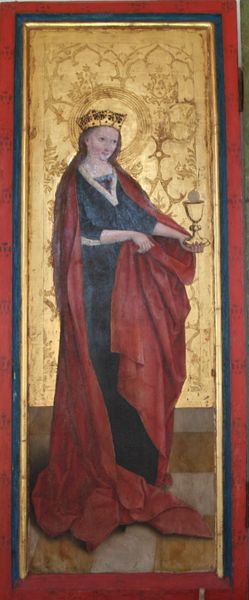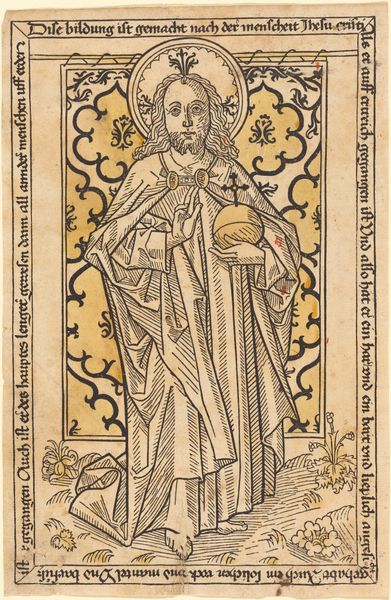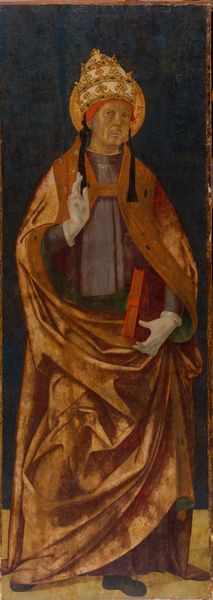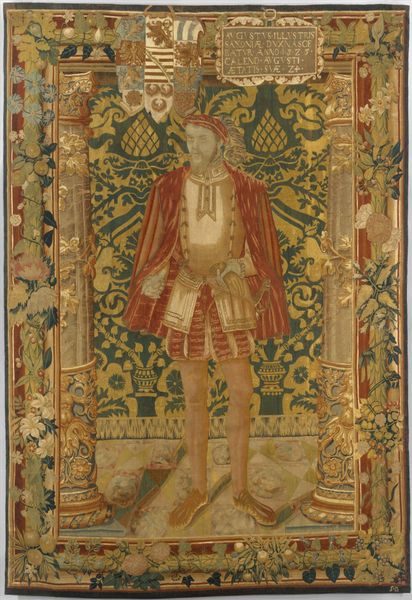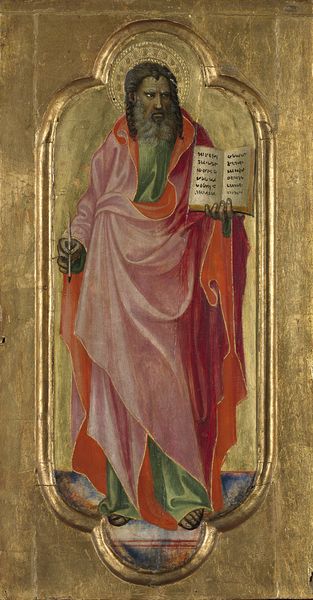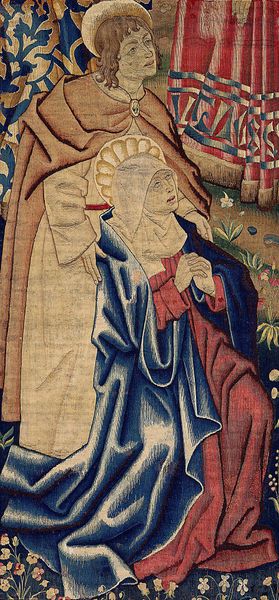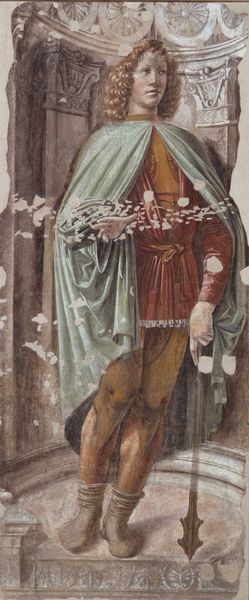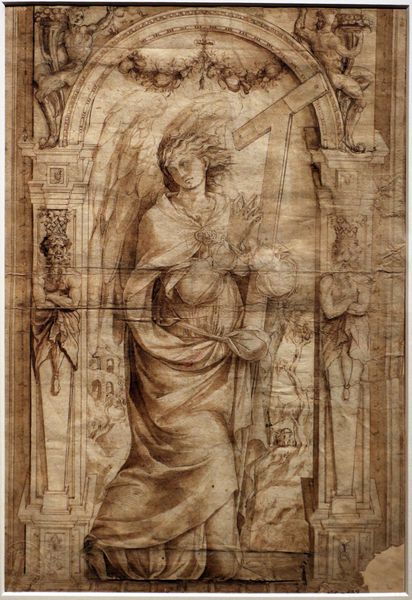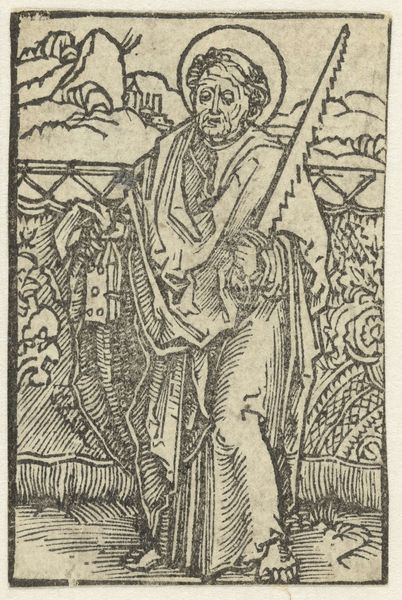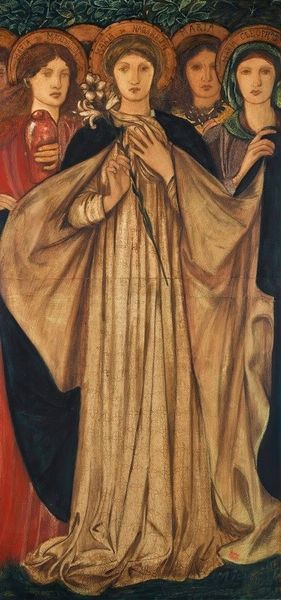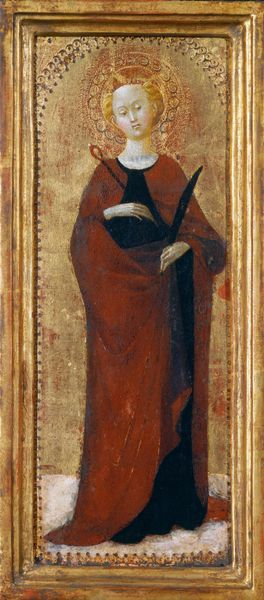
carving, tempera, painting, oil-paint, sculpture, wood
#
portrait
#
medieval
#
carving
#
tempera
#
painting
#
oil-paint
#
figuration
#
romanesque
#
oil painting
#
tile art
#
sculpture
#
wood
#
history-painting
#
decorative-art
#
italian-renaissance
Dimensions: 24-3/16 x 17-1/8 in. (61.5 x 43.3 cm.)
Copyright: Public Domain
Curator: What an arresting fellow. This is "Scipio Africanus," dating from 1420 to 1435, created by Mattia di Nanni di Stefano. Editor: Stark, isn't he? Almost unsettling. The pronounced linearity in the figure... it's so stylized. Not your typical Renaissance hero, that's for sure. Curator: He certainly challenges conventional heroism. Crafted with tempera and oil paint on wood, it is a piece of great curiosity for its unconventional, slightly haunted feel. Imagine the cultural mindset that birthed such a representation! It's in the Metropolitan Museum of Art if you fancy visiting. Editor: Yes, there is an unexpected expressive intensity in his gaze. The medium enhances that starkness; the wood grain itself seems to articulate his form, echoing the linearity you mentioned. But this...almost emaciated, skeletal quality contrasts strangely with his declared heroism. The choice of palette is similarly austere: it reinforces the gravity and lends a kind of ghostly presence. Curator: Precisely! Think of the intent: Scipio Africanus, a celebrated Roman general, rendered with this almost... ascetic severity. It's as if the artist sought to distill the essence of power down to something almost spiritual. It begs the question: is it deconstruction or pure Medieval interpretation of a Roman figure? Editor: It is tempting to look at his form as emblematic—a series of signs referencing both earthly power and its ultimate fragility. What of the geometric logic, though? That patterned backdrop, almost a tapestry of abstract motifs. Curator: Absolutely. He's not presented against a realistic landscape but this elaborate, almost theatrical backdrop, emphasizing the symbolic nature of the portrait. Editor: Which points, quite literally, to the formal artifice and clever construction— the intention, or the 'hand', of the artist to draw attention to the subject matter, to Scipio. The angles make the mind work. Curator: It definitely makes one think, question. Makes art all the more compelling, wouldn't you say? It's that unresolved tension, those artistic choices. Editor: Indeed, an enigmatic and powerful work that persists in defying easy categorization.
Comments
No comments
Be the first to comment and join the conversation on the ultimate creative platform.
